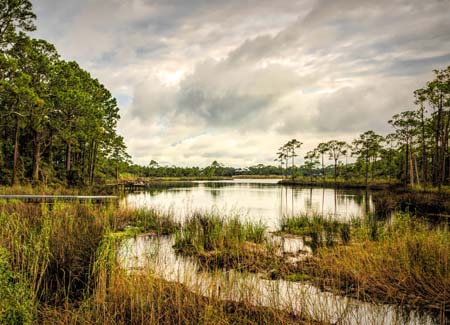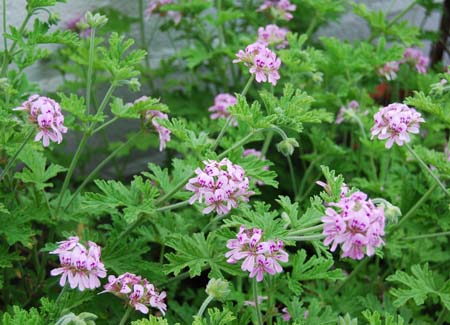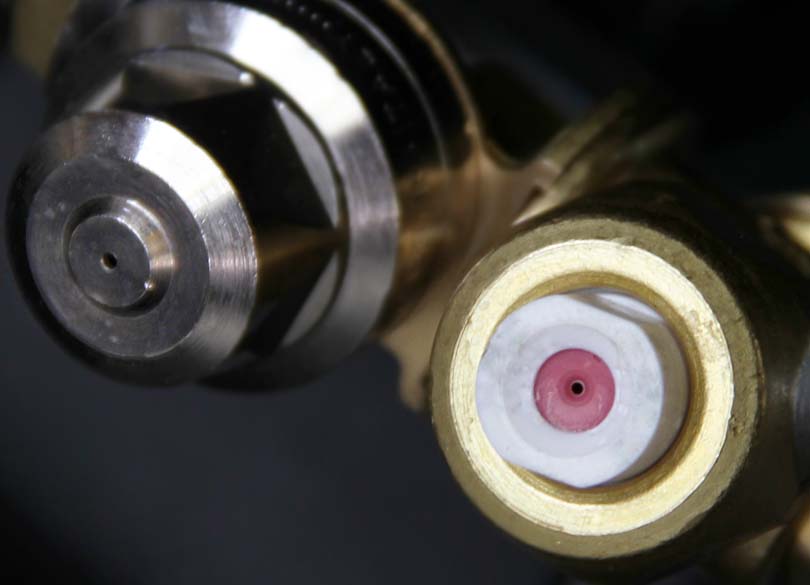
Factors to be taken into consideration when installing a mosquito misting system
Installing a mosquito misting system gives commercial venues and homeowners a completely new control and use of their property. Mosquito misting systems are extremely effective at killing mosquitoes, no-see-hums and other insects. A-Niks installs unique, patented misting systems for restaurants with large outdoor dining areas, in resorts with landscaped areas, in outdoor recreational facilities, as well as in individual residents for homeowners who want to be free to enjoy outdoor living in Florida and the southeastern states.
With the popularization of mosquito misting systems, big box stores have started selling DIY versions to homeowners. But although these DIY versions can be somewhat effective in covering small outdoor areas, they can’t be compared to the professional systems and services offered by A-Niks.
We show in this article why the level of service offered by A-Niks when installing a mosquito misting system requires a completely different level of engineering, just with regard to the external factors studied to design, engineer, and integrate a system in a landscaped area.
We will cover the following topics:
- Topography
- Geography
- Botany
- Mechanics
All these factors have to be analyzed prior to installing a mosquito misting system to ensure it achieves its purpose, operates at an optimum cost, and adds value to the property it covers.
I. Topography: How we conform to terrain when installing a mosquito misting system
1. Terrain
The A-Niks installation specialists account for variations in terrain, such as slopes or depressions, which can affect the distribution of mist and the placement of nozzles.

a. Slopes:
b. Depressions:
2. Drainage
Proper drainage will prevent standing water, which serves as mosquito breeding grounds. While installing a mosquito misting system, A-Niks identifies and addresses any drainage issues in the area.
The key components and aspects of an effective drainage system include:
 Swales and Ditches: Swales (shallow, grassy channels) or ditches can be used to direct water flow towards designated drainage points or areas. These features help to collect and transport excess water, reducing the likelihood of standing water.
Swales and Ditches: Swales (shallow, grassy channels) or ditches can be used to direct water flow towards designated drainage points or areas. These features help to collect and transport excess water, reducing the likelihood of standing water.Permeable Surfaces: Incorporating permeable paving materials, such as permeable pavers or porous asphalt, can help reduce surface runoff and promote infiltration. These surfaces allow water to pass through and enter the underlying soil, minimizing standing water and enhancing overall drainage.
What kind of drainage-related issues does the A-Niks specialist seek to prevent when installing a mosquito misting system?
Inadequate Coverage: If standing water persists in areas where the mosquito misting system is not providing adequate coverage, mosquitoes can continue to breed, undermining the system’s effectiveness.
All these factors are taken into consideration when our specialists design and start installing a mosquito misting system at your property.
II. Geography
1. Local climate
Local climate conditions (temperature, humidity, rainfall) can impact the effectiveness of the mosquito misting system and the frequency of treatments.

a. Temperature:
Higher temperatures can cause the mist to evaporate more quickly, reducing its effectiveness in controlling mosquito populations. In a hot climate like Florida, our installers adjust the misting frequency to maintain the desired level of control.
b. Humidity:
High humidity can promote mosquito breeding and increase their activity. In the humid climate of Florida, Georgia and Alabama, the mosquito misting system needs to run more frequently to keep mosquito populations in check. On the other hand, low humidity can cause the mist to evaporate quickly, requiring adjustments to the system’s settings or treatment frequency.
c. Rainfall:
Heavy rainfall can wash away the mist, reducing its effectiveness. In areas with frequent rainfall, the A-Niks installer will increase the misting frequency or adjust the system to trigger automatically after a rain event.
2. Wind Patterns
The prevailing wind direction and speed can influence the dispersion of the mist, and A-Niks will consider this when determining nozzle placement and orientation.
a. Wind Direction:
Prevailing wind direction can carry the mist away from the intended coverage area or cause it to concentrate in specific locations. A-Niks installers consider the prevailing wind direction when determining nozzle placement and orientation to ensure even distribution of the mist.
b. Wind Speed:
High wind speeds can cause the mist to disperse too quickly, reducing its effectiveness in controlling mosquito populations. In areas with strong winds, the A-Niks specialists adjust the nozzle spacing and orientation to compensate for wind effects, such as directing nozzles into the wind or installing windbreaks to protect the mosquito misting system.
c. Microclimates:
Local wind patterns, such as those caused by buildings, trees, or other landscape features, can create microclimates that affect mist dispersion. A-Niks assesses these microclimates to determine optimal nozzle placement and orientation.
III. Botany: Wehn installing a mosquito misting system, we work with nature

1. Vegetation
Dense vegetation can harbor mosquitoes and obstruct the mist. A-Niks advises homeowners and commercial clients of the need to trim or remove excess vegetation to improve mist coverage and circulation.
2. Wind Patterns
Some plants, such as citronella and marigolds, have natural mosquito-repellent properties. Incorporating these plants into the landscape can enhance the effectiveness of the mosquito misting system.
IV. Mechanics:
1. System Design
A-Niks designs its mosquito misting systems to provide even coverage across the entire area, ensuring that all nozzles are spaced appropriately and directed correctly.
2. Pump and Reservoir Capacity
Before installation, A-Niks will select a pump and reservoir with the appropriate capacity to maintain the desired misting frequency and coverage area.
3. Maintenance
Regular maintenance, such as cleaning and inspecting nozzles, filters, and lines, is crucial for ensuring the system operates efficiently. A-Niks can provide guidelines for proper maintenance, but we are full service from installing a mosquito misting system to maintaining it.
These guidelines typically include:

a) Regular Inspection:
Conduct routine visual inspections of the mosquito misting system components, including nozzles, tubing, filters, and the pump, to identify any signs of damage, wear, leaks, or blockages.
b) Nozzle Cleaning:
Clean the nozzles periodically to remove any debris, mineral deposits, or other obstructions that may reduce mist output or cause uneven distribution. A soft brush or toothpick can be used to gently remove buildup. Always turn off the system before cleaning nozzles.
c) Filter Replacement or Cleaning:
Replace or clean the system’s filters as recommended by the manufacturer. Clogged filters can reduce the flow of insecticide and impact the overall performance of the system.
d) Tubing Inspection:
Check the tubing for any signs of wear, cracks, leaks, or damage. Repair or replace damaged tubing as needed to prevent leaks and maintain system pressure.
e) Pump and Reservoir Maintenance:
Inspect the pump and reservoir for any signs of damage, corrosion, or leaks. Clean the reservoir to remove any sediment or debris, and ensure the pump is functioning correctly.
f) Insecticide Levels:
Monitor and maintain the appropriate insecticide levels in the reservoir, refilling as needed according to A-Niks’ instructions.
g) System Calibration:
Periodically check the system’s calibration to ensure the correct amount of insecticide is being dispensed during each misting cycle. Adjust the settings if necessary, following A-Niks’ guidelines.
h) Seasonal Maintenance:
At the beginning and end of the mosquito season, perform a thorough inspection and maintenance of the system. This may include winterizing the system in colder climates to protect against freezing temperatures and potential damage.
i) Record Keeping:
Keep a maintenance log to track inspections, repairs, and any other maintenance performed on the system. This can help identify recurring issues and ensure timely preventive maintenance.
j) Maintenance by A-Niks:
If any issues are beyond the homeowner’s or business owner’s expertise or comfort level, or if the system requires more complex maintenance or repairs, A-Niks offers a maintenance contract with regular scheduled maintenance to keep your mosquito misting system operating at specifications


